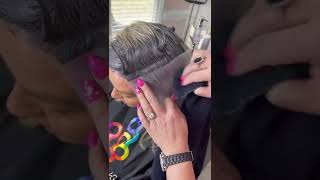Hair Weave Sanitation
- Posted on 06 October, 2016
- Hair Knowledge
- By Anonymous
Sterilize Weave Needles Sterilize Weave Needles. How often do you sterilize your weave needles? How do you sterilize your weave needles? How do you protect your and your clients from harmful bacteria? Leave questions and comments below. [email protected] Jean Andrew Hair Solutions located in Katy Texas
Hey this is Deidre at Jean and your hair solutions. Thank you for watching my video today today. I want to touch on the topic that you don't hear too many people speaking around, and it is sanitation specifically for hair extension. Here we use services that involve needles. Needles are sharks as we call them in the medical and healthcare industry. I am licensed cosmetologist and I've been practicing for 23 years. I'M also a registered nurse, and I've been practicing for the past six years since 2010. My specialty of Nursing is perioperative nursing. That means I'm a registered nurse in the or I'm the nurse. That'S in the room with clients with patients, while they are asleep, it's anesthesia, the surgeon, the scrub tech and then there's a circulating nurse. That'S what I do, but the way that I apply, my nursing knowledge to my cosmetology practice is in the or there is sterile technique. Sterile technique means that the items we use the the tools in the needles, the sutures and all of the different items that we use for surgery are free from bacteria. They have been treated with maybe different gasses, depending on the type of item it is or high steam heat, and then we also have some things are that are treated with pressure processes and things like that. But the reason why you want to have these items treated to be sterilized is because you do not want to introduce any back to the surgical site, whoever the patient is being operated on. So I take that information and I applied that to my cosmetology practice, because people don't realize how harmful our good organization and efficiency thinking can be. So many people have these cushions that they put all their hair, weaving needles in and they can be very harmful because if you are not cleansing, disinfecting or sterilizing your needles, each time you put a needle back into that cushion you're introducing bacteria from each color in Internet cushion so here you are: oh I've had 100 needles already turn it up. I'M always always ready. That'S efficiently, that's great thinking, but when you think about the larger picture in the amount of bacteria that is harbored in that cushion and continues to get past best back and forth from client to client, and even you sometimes because you know what you might graze, your Skin and puncture the very outer layer of your skin so now you're introducing all that bacteria to yourself. We need to be more conscious about how we are sterilizing our equipment and how we are protecting ourselves and our clients from harmful bacteria. You don't know who is carrying what that's the the day and age that we live in, and this is not about creating a stigma or anything about anyone's condition. That'S not what this video is about. This video is about protecting yourself as a professional, your health and your legal liability in regards to possibly passing harmful bacteria from one kind to the other car. So what do I do to prevent cross-contamination from clients, Akane or harm me myself in regards to harmless bacteria? What I do is, I use a sterilizer okay, this is a sterilizer that is used in pretty much everyone's homes. You have children and babies. You have used a plug up counter sterilizer. This uses high heat steam to sterilize your child's bottles. Okay, it makes perfect sense. This is something that anyone can have access to in order to clean your needles. Okay, this is the type of container that I keep my needles in, and I keep my hair weaving needles and my sewing needles in here that I use on the sewing machine to make my units, but this is so important. It'S so important. It'S something that is not addressed in state board: literature, about sharp safety in regards to health, weaving. We have to be a head of state board, okay, don't let something occur and then the state board is coming to you. After the fact, the head of the state board be ahead of the curve and protect your clients, protect yourself from harmful bacteria by sterilizing your needles. I don't keep my needles pre thread. I know who is coming in. I take care of my sterilization. Okay, then I thread up the needles and how do I store my needles while I'm working, I just roll up a clean towel and I take those needles that are already threaded and that's when I hold them in, and I worked from that when I finish with That kind the needles don't get thrown back with everything already sterilized the towel goes in my towel, then my needles get set to the side and I cleanse them and sterilize them. We must protect ourselves, our health and our legal liability in regards to passing harmful bacteria from client to client in client to ourselves be proactive. Barbicide is not gon na cut it. Okay, we use, therefore our colors and our brushes and that's fine, but those aren't sharps. These are sharps. You want to go a little further, just use certain needles per client. If you know okay, I'm doing a sewing thread up really long. Do three or four really long toss those needles in a sharps container. So that way, every time you're with the client doing here is that you, you have no needles, you can sterilize them or just use no needles. Please be ahead of the curve, think further and more constructively to protect yourself and your connie's in to preserve your name. Your business name, okay, thank you so much for watching. My name is Deidre Chism, I'm the owner of Jeannie Andrew hair solutions in Katy, Texas, and I offer hair replacement and hair extension services. My phone number is eight three, two, two six three, three four five. Eight website J, a hair calm. I really appreciate you taking the time out of your day, enjoy your day, see you something.





Comments
guacgirl: thank you! this is excellent information! gonna get me a baby bottle steamer asap!